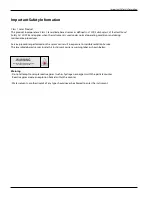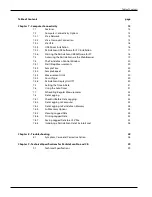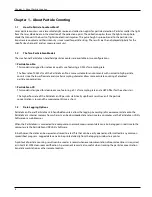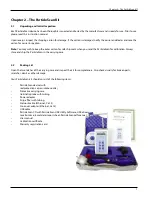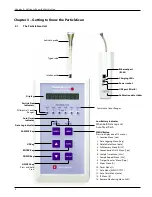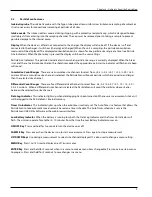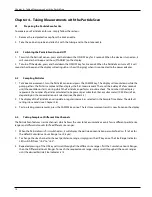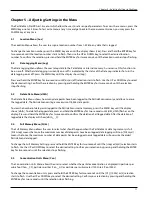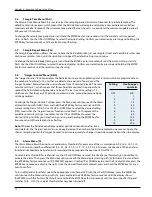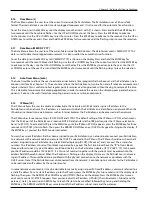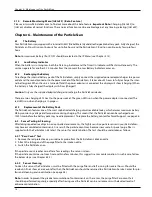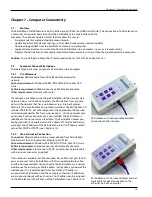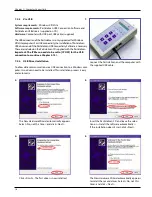
14
Chapter 6 – Maintenance of the ParticleScan
Chapter 6 – Maintenance of the ParticleScan
6.1
The Battery
Your ParticleScan is equipped with a internal Ni-MH (Nickel-Metal Hydride) rechargeable battery pack. Fully charged, the
ParticleScan Pro will run continuously for up to five hours and the ParticleScan CR will run continuously for up to four
hours.
Note:
For maximum battery life, IP OFF should be selected in the IP Menu (see Chapter 5.13).
6.1.1
Low Battery Indicator
When the battery is running low, both the Data Log Indicator and the Timer On Indicator will flash simultaneously. The
unit can operate for another 5-10 minutes from the moment the Low Battery Indicator comes on.
6.1.2
Recharging the Battery
To recharge the internal battery pack of the ParticleScan, simply connect the supplied power adaptor/charger to a power
outlet and the round connector to the power socket of the ParticleScan. It takes about 3 hours to fully recharge the inter-
nal battery pack. When the unit is turned off and the power adapter is connected, the display will show [charging]. When
the battery is fully charged, the display will show [charged].
Caution:
Only use the supplied adaptor/charger to recharge the ParticleScan device.
There are two charging LEDs next to the power socket. The green LED is on when the power adapter is connected. The
red LED is on when charging is in progess.
6.1.3
Replacement of the Battery Pack
The ParticleScan features one of the most sophisticated charging circuits available today, which ensures maximum battery
life by monitoring voltage and temperature during charging. This means that the ParticleScan can be recharged over
1000 times before the battery pack may need replacement. To replace the battery, contact Technical Support, see page 28.
6.2
Sensor Testing & Cleaning
After taking repeated readings in non-controlled environments, the highly sensitive particle sensor in your ParticleScan
may have accumulated contaminants. As a result, the particle count may become inaccurate. A special purge filter is
supplied with the ParticleScan kit to test the sensor for contamination. The test should be undertaken as follows:
6.2.1 “Zero Count” Test
1. Remove the red protective cap or isokinetic probe from the ParticleScan’s intake nozzle.
2. Attach the tubing end of the purge filter to the intake nozzle.
3. Switch the ParticleScan on.
If the particle count reaches zero after a few readings, the sensor is clean.
If the particle count does not reach zero within a few minutes, this suggests sensor contamination. In such a case, follow
the below steps. (see Chapter 6.2.2)
6.2.2
Sensor Cleaning
To clean the sensor, the ParticleScan must be fitted with the purge filter and left running for several hours. Should the
readout still not show a zero count after that, the ParticleScan should be returned to a ParticleScan Service Center for pro-
fessional cleaning and re-calibration (see page 28).
Note:
In order to prevent the gradual accumulation of contaminants on the sensor, the purge filter ‘zero count’ test
should be performed regularly, especially after having used the ParticleScan in environments with elevated levels of
airborne contamination.
5.14
Remote Monitoring Menu [InEt oFF] (Beta-Feature)
Please visit www.ParticleCam.com to find out more about this beta-feature.
Important Note:
Changing [InEt oFF] to
[InEt on] disables all normal functions. These normal functions can be enabled again at any time by selecting [InEt oFF].
Summary of Contents for ParticleScan CR
Page 30: ...30 Notes...
Page 31: ...080312_IQ_MA_PSPPSCR_US...



